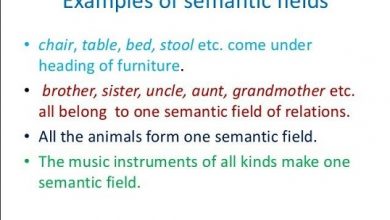Fallacies of ambiguity characteristics Classification types examples
Fallacies of ambiguity
Fallacies are generated by a misunderstanding of reasoning, lack of clarity in the use of a phrase or word that generates the logical error and that can have persuasive psychological force, being, however, a simple mistake generated from the concatenation of its propositions – and many times even producing epistemological mistakes. The word or phrase may be ambiguous, in which case it has more than one distinct meaning, or the word or phrase may be vague, that is, without a distinct meaning. In this article we will provide you the Fallacies of ambiguity.
Classification of Fallacies of ambiguity
1-Misconception
The same word can be used with two different meanings. Examples:
- Crime is illegality. The trial of a robbery or murder are criminal actions. Robbery and murder trials are called criminal actions. Therefore, the robbery and murder trials are illegal. (Example taken from Copi.)
- Child killers are inhumane. Therefore, humans do not kill children. (The argument plays on the moral and descriptive meanings of ‘human’)
- In order to be big or small, an object must first be. Therefore, the being of the object came first. (Play with the logical and physical meanings of “to be”)
2-Amphibology
An amphibology occurs when the construction of the sentence allows us to assign different meanings to it. Examples:
- At your job, everyone likes a car. So there is a very special car. (Does everyone like any car or the same car?)
- The Oracle of Delphi told Croesus, king of Lydia, that “if Croesus declares war on Persia, he will destroy a mighty kingdom”. (The Oracle didn’t say it would be his own kingdom…)
3-Emphasis
- The ex-girlfriend, seeking revenge on the captain, wrote in the newspaper: “Today, the captain was sober.” [She suggests, with emphasis, that the captain is usually drunk. (Copy, p. 117)].
- Revolution in France is feared by the authorities (the term “feared” puts the authorities at risk, since it is not clear in what form the fear is given, or if in a preventive or fearful way).
4-Composition
Applies to two types of invalid arguments that are closely related to each other. The first is described as reasoning fallaciously from the properties of the parts of a whole to the properties of the whole itself; the second is strictly parallel to what has just been described, that is, the fallacious reasoning starts from the properties possessed by elements or individual members of a collection to the properties possessed by the collection or totality of these elements (it is like thinking from an inductive reasoning to the deductive, and vice versa, or, even more, from generalization to particularization or, figuratively, from universality to contingency, and so on). Examples:
- All the parts of a certain machine are light in weight, so the machine “as a whole” is also light in weight (the error manifests itself when we think that a very heavy machine cannot consist of many light parts).
5-Division
It is the inverse of the COMPOSITION fallacy. The same confusion presents itself in it, but the inference develops in the opposite direction. A little tricky to tell them apart, but it wouldn’t be appropriate to consider this an impossible task. The first mistake of the fallacy of DIVISION considers that what is valid collectively must be valid individually, as well as the second mistake, in reverse, when arguing from the properties of a collection of elements to the properties of the same elements. Examples:
- If a certain company is very important, then Mr. Doe, who is one of its employees, is very important.
- Dogs are common. Rhodesians are dogs. Therefore, Rhodesians are common (the breed being known to be obviously rare).
Types of fallacies of ambiguity and examples
1- The mistake
It is produced by the confusion generated by the different meanings of a word or phrase used in the same context.
Example
– Premise 1: heroin is harmful to health.
– Premise 2: Maria is a heroine.
– Conclusion: Maria is harmful to health.
2- Amphibology
It consists of the argumentation on ambiguous premises due to its grammatical structure. In other words, it refers to the lack of clarity in the statements.
Example
– Premise 1: we will go through the park and the zoo.
– Premise 2: we wait for you there.
– Conclusion: where are they waiting for you, in the park or at the zoo?
3- The composition
In this it is expressed that the whole must also be of the same nature as its parts. That is, what is true for the whole is true for the parts. Fallacies of ambiguity characteristics
Example
– Premise 1: Lemons are very acidic.
– Premise 2: the lemon cake has lemons.
– Conclusion: as the lemon cake has lemons, then it is very acidic.
4- The division
Contrary to the fallacies of composition, those of division assume that what is true in relation to the whole is also true for any of its parts.
Example
– Premise 1: the university of the north is of the first level.
– Premise 2: the students of the northern university are all first level.
– Conclusion: all the students of the north university are first level because the north university is first level.
5- The emphasis or accent
These fallacies are committed the moment the argument is pronounced by its author with an inappropriate accent.
It is also called the fallacy of phonetic ambiguity, and it results from an incorrect intonation or pronunciation that causes the wrong understanding on the part of the interlocutor.
Example
– Physical violence is highly harmful.
When the highest intonation occurs in the word “physical”, the interlocutor may conclude that other means of violence, such as verbal and psychological, are not harmful.
Other examples
Example 1
In the following conversation, an amphibology occurs
-My husband’s pig is sick.
-Who is sick? Your husband or the pig?
Example 2
The following reflection is a fallacy by composition.
If the hummus sauce is delicious. The garlic, paprika, chickpeas, or cumin, which are the ingredients with which the sauce is made, will also be delicious. Fallacies of ambiguity characteristics

